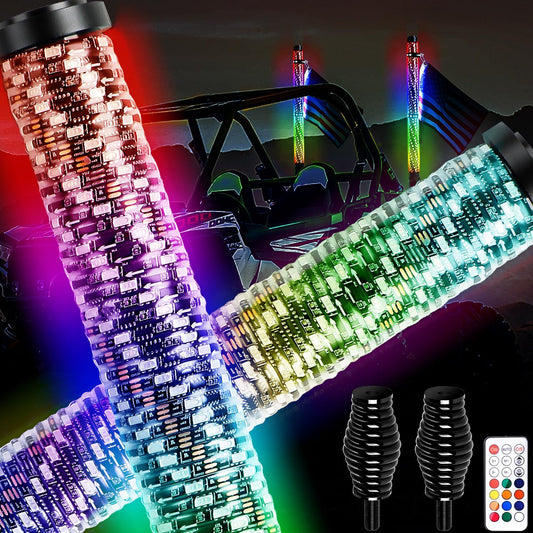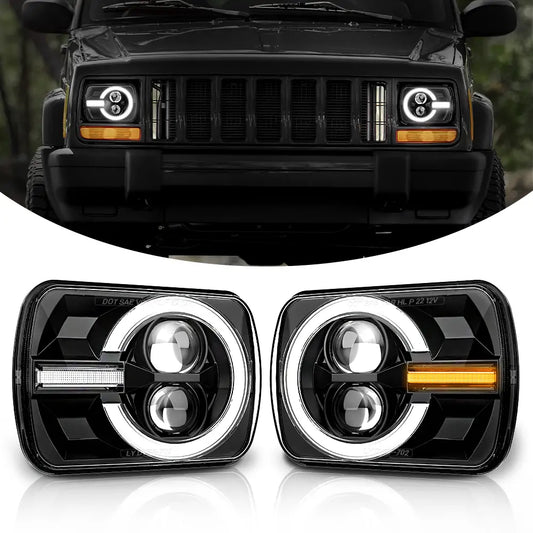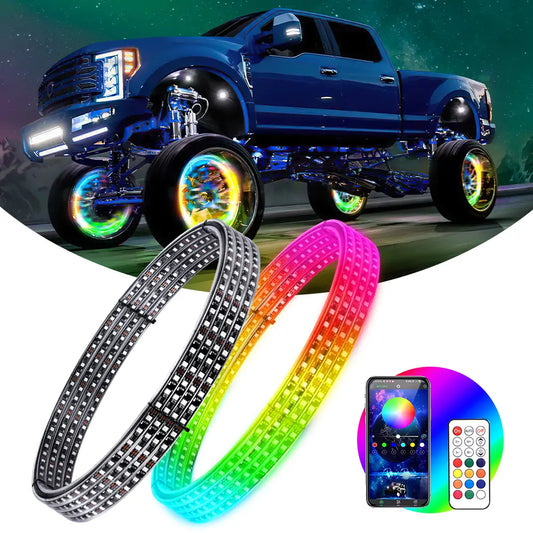
For over a century, Harley-Davidson motorcycles have been the stuff of legends, capturing the hearts of riders across the globe with their raw power and unbridled Spirit. But the full story of Harley-Davidson is more than just a tale about building iconic motorbikes, it's a story about the Never say die and never quit attitude that rises in the face of failure after failure. In the midst of War poverty and foreign competitors, Harley-Davidson is a tale of true American grit and an image of the pioneering spirit that refuses to Be Tamed. It's more than just a motorcycle brand, it's a symbol of Americana. So buckle up and get ready to take the ride of your life as we delve deep into the heart of this American Legend and uncover the secrets of when William Harley met the Davidson Brothers.
Humble Beginnings
-
The Childhood of Innovation
Born in the 1870s and 80s, William Harley and the three Davidson Brothers Arthur, Walter and William, were all raised in Milwaukee Wisconsin. They were all first-generation Americans from immigrant parents and grew up next door to one another. The boys grew up close friends, playing outside together and tinkering with their bicycles. When they were 14 and 15 years old, William Harley and Arthur Davidson both got their first jobs working in a bicycle Factory. Harley worked on the assembly floor learning how to assemble bike frames and fittings while Davidson learned how to become a pattern maker.
A couple of years later, Harley got an apprenticeship at a metal fabrication plant. So from an early age both of them were learning all the necessary skills to one day build their own bicycles. In the late 1800s, before cars bicycles were incredibly popular and because there was no pavement yet, people dealt with riding on dirt paths and back roads that were filled with rocks and holes, so riding a bicycle wasn't exactly a smooth ride.
At the time there were motorcycles somewhere in the world, the first was invented in Germany in 1885, but most of the early models were typically a bicycle with a motor attached. So you still have the option to pedal. And there already was a motorcycle company establishing itself in America - the Hendee Manufacturing Company, who had eventually rename themselves Indian Motorcycles, opened their doors in 1901. In fact William Harley was one of their very first customers.
-
Against the Grain: Early Innovation
One day, he was riding his Indian motorbike, when he realized the problem with the bike and how to fix it. He bought existing parts to improve the motorcycle suspension, this made it far more comfortable for the ride on bumpy roads.
Later that year, William Harley turned 20 and he drew up plans for a small engine with a displacement of 116 CC and 4-inch flywheels designed for use in a regular pedal bicycle frame. But though Harley loved to devote all his time to designing bikes, he couldn't, he was a student studying mechanical engineering at the University of Wisconsin, and he was also working two jobs as a draftsman and waiting tables at a restaurant.
The Ride Through Adversity: Persistence and Evolution
-
The Era of Motor Bicycles
Over the next two years, Harley recruited his friends Arthur and Walter Davidson to help him work on building a motor bicycle. They worked out of a tiny 10 foot by 15 foot wooden shed in the Davidson's family backyard. And when it was complete, they realized it was a failure. It wasn't powerful enough to go up hills on its own without using the pedals of the bike. Still, it was a valuable learning experience and they didn't give up. They loved motor power bicycles and they were determined to make a better model. Their first motorcycle was called the model 0, it ran on a single cylinder engine, that wasn't very powerful, there was no clutch, no front brake, and no suspension. it also ran on a leather belt instead of being chain driven.
-
The First Victory and Beyond
Their model 0 prototype was made in 1903 and they first became available for sale in 1905. They entered it in a few races, when it competed in the Milwaukee motorcycle race held in the State Fair Park, a rider named Edward Hildebrand wrote it and placed fourth in that race. With that small amount of publicity, they built just five motorcycles in their shed and sold three of them. Eventually, in 1906, they were able to move their operation out of the tiny wooden shed in the Davidson's family backyard and into a factory on Chestnut Street in Milwaukee. That first year in business, they only sold 50 bikes. Now this might not sound like much, but it was actually amazing, considering that their rival Indian Motorcycles only sold one bike in their first year of business. During this time, Harley never stopped riding motorcycles. And he was still passionate about the hobby. He attended rallies for bike owners and asked people what sort of improvements they wanted out of a motorcycle. When he finally graduated in 1907, he used all of this knowledge that he collected to change up the design of their Harley-Davidson motorcycles. That same year Arthur and Walter's brother William A. Davidson joined the company as well. And these four friends officially incorporated the Harley-Davidson brand together. They worked incredibly hard all the time, working ever every single day even Sunday. And they wouldn't leave their Factory before 10 pm every night. William Harley once said, life offers few guarantees, but generally the harder you work, the more likely you'll succeed. The next year, in their first official year as a corporation, they sold 150 motorcycles.
Harley-Davidson knew they had a great design, but the world just didn't know it yet. they needed publicity in order to make a name for their brand. So in 1908, there was a motorcycle race called the FAM New York endurance race, they knew their bikes couldn't outdo Indian Motorcycles in terms of speed, but they had an edge. they knew they could make a bike that lasted longer over long distances. Walter Davidson rode for 350 miles over dirt roads and rough terrain, and in the end he won first place. After the race, William Harley went back to improving the engine, and came up with a revolutionary idea. He designed a two-cylinder engine called the V-Twin which made that plop plop sound. You know the sound, the one that's so iconic that Harley-Davidson trademarked it back in 1994. Anyway, they released the new vehicle to the public in 1909 and this time it failed again.
But still deep down, they believed they had a lot of potential. It was eight years of design after design of failed bikes. But they never gave up. In 1911, they released the model 70 which was finally a success. It became popular among board track racers. And Harley-Davidson sponsored a racing team called the wrecking crew and they raced at the most dangerous racetrack there was - the MURDERDROME. Actually it was called the MOTORDROME, but this track was built with a 50 degree bank angle, Riders were forced to maintain a speed of 116 miles an hour just to keep themselves from sliding off. And keep in mind that these motorcycles didn't even have brakes at the time. Several Racers died and even members of the audience were hit by motorcycles, and that's how the Motordrome race track got its nicknamed Murderdrome. Ultimately Harley-Davidson decided it was much better to shift their focus to racing on flat tracks instead.
Riding into History: The Brand's Fabric in America's Story
-
A Symbol of Service and Patriotism
Over the years, Harley-Davidson was considered a small motorcycle company selling to hobbyists. But the business truly began to take off when they started selling their motorcycle to government organizations like the police, the U.S Postal Service and the Army. Finally they began to see some financial success and notoriety.
True story, in 1916, when the Mexican General Pancho Villa was stirring up trouble at the American border, General Black Jack Pershing was sent down on a trip to New Mexico to capture the Mexican Bandits. However they were incredibly hard to catch because they all rode on horseback. So Pershing reached out to Harley-Davidson for help. They sent 12 Hogs with sidecars fully equipped with machine gun turrets, though they never actually caught Pancho Villa, they absolutely loved it.
And the story still goes down in history. But then they faced their greatest competition of all cars. Cars were clearly the future and not motorbikes. And as Henry Ford kept lowering and lowering the price of his Model T, it was now so low that it was roughly the same cost to own either a motorcycle or a car. The obvious advantage to cars of course is that they can fit multiple people at a time and provide a roof over your head when it rained or snowed. so how did Harley and the Davidsons react? Well, that's one of life's greatest business lessons. They decided to build a brand around their image. They began advertising the idea that while family men drove cars, the cool young men rode motorcycles. Harley-Davidson started selling clothes and accessories with their brand name Logo on it, so Riders began to feel that they were part of an exclusive club and this built an entire subculture around being a biker.
In 1917 when the United States entered World War I, Harley-Davidson scored a contract to provide motorcycles to the U.S military, so they sent a third of their total inventory that year. By the time the war was over, it's estimated that the U.S military used 20,000 motorcycles, and the majority of them were made by Harley-Davidson. this completely solidified the company's position as a leader in the industry. In the 1920s and 30s, Harley-Davidson introduced several new models and created the world's first overhead valve big twin called THE KNUCKLEHEAD, expanded their dealer Network to reach customers across the country, and eventually expanded to 67 countries around the world. But that decade wasn't easy.
-
The Great Depression and a Testament to Survival
The Great Depression began just a few months after the introduction of their 740cc model in 1929. Harley-Davidson sales fell from 21,000 in 1929 to just 3,700 in 1933. I order to survive the remainder of the Great Depression, the company manufactured industrial power plant chance. They were one of only two American motorcycle companies to survive the Great Depression, along with its rival Indian Motorcycles.
During World War II, Harley-Davidson stopped producing civilian bikes completely, so they could focus on supplying motorcycles to the army. They sent the model WLA nicknamed THE LIBERATOR, they designed this bike to be easier to work on and it came in two colors: green or black. They produced an estimated 60 thousand bikes for the US Military, and the war proved beneficial for Harley-Davidson. After the war was over in 1945, thousands of men returned home with a newfound love to go really really fast. on top of that, many of them now had a top-notch engineering education from their days in the military, these leftover Liberator bikes were sold for very cheap and a lot of veterans decided to buy and modify them. They would chop off old parts to add new, and this is where the term Chopper comes from. These GI's were meeting up with one another across the country and formed their own motorcycle clubs, and that's when the Harley-Davidson brand officially became a symbol of the American Spirit. And they grew rapidly. They immediately jumped back into making some of their most popular models before the war: the KNUCKLEDHEAD and the PANHEAD. By now, all of the founders Harley and the Davidson brothers were in their 60s and 70s, but they were all so passionate about the company that they chose to never retire. This was a time to get their affairs in order and to pass the company on to the next generation.
And by 1950, when all four of the original founders of Harley-Davidson had passed away, they left the company to their family, and they remained a privately owned business for a long time.
The Biker Image: From Counterculture to Mainstream
-
Reframing the Biker Persona
During the 1950s, Harley-Davidson's image of that cool young motorcycle owner took a dark turn. The American motorcyclists Association Gypsy Tour in Hollister California was supposed to be a laid-back convention for motorcycle enthusiasts, but over 4,000 bikers took over the small town. They were drinking heavily and had broke out into a riot. When the newspapers reported on the Hollister Riot. this officially gave bikers a bad reputation. and scared the idyllic 50s clean-cut family living with the white picket fence. Additionally, one of the most famous clubs was called the Hell's Angels which formed just a year after the riot. The club was Notorious for violence, and it only solidified the bad boy reputation of bikers. But none of it hurt Harley-Davidson.
-
Rallies, Riots, and Rebellion
In 1953, a film called The Wild One starring Marlon Brando brought the biker aesthetic to the big screen. This movie helped the sales of Harley-Davidson skyrocket. Soon afterwards, movie stars like Elvis Presley and Clark Gable were seen riding Harleys, and it wasn't long before Harley-Davidson became an iconic American brand that was recognized around the world.
The Modern Era: Challenges and Reinvention
-
The Japanese Tide and the Battle for Survival
For the first half of the 20th Century, Harley-Davidson dominated the American Motorcycle industry. and in 1957, they released their Sportster model, which was considered to be the beginning of the modern day Superbike. by the 1960s the United States was beginning to see competition with an influx of motorcycles coming in from other countries, Honda came out with a campaign to sell more of their bikes their tagline was: you meet the nicest people on a Honda, which directly challenged the stereotypes associated with Harley-Davidson owners. And it worked. Japanese motorcycles became such a strong competition that Harley-Davidson sales decreased. They were struggling so badly. That in 1969 the family sold Harley-Davidson to a sports manufacturing company called American machine Foundry. AMF streamlined production and laid off workers they deemed unnecessary, the quality of the motorcycles suffered as a result too, and sales declined. One positive thing to come out of the AMF era was the model XR7 50, which premiered in 1970, it has more wins than any other bike in AMA racing. Evil Knievel famously rode this motorcycle to do his hair raising stunts. Eventually AMF realized that Harley-Davidson simply wasn't a good fit for their company, so in 1981 the company was sold to a group of investors for 80 million dollars. One of the key investors in this group was Willie G Davidson the grandson of company co-founder William A. Davidson. Once it was back in Davidson's hands the quality of the motorcycles increased dramatically. Willy's first challenge to beat the competition with the Japanese. And the only way to stop the company from being beat out by Foreign manufacturers was to go all the way to the top. In 1983, Harley-Davidson petitioned President Ronald Reagan to impose tariffs on motorcycle imports that were 700 CC's or more. Reagan raised the import taxes from 4% to 49%, this massive tax import was enough to damage the sales of motorcycles from Japan. Japanese companies and gave the American-made brands an advantage. During a speech he gave to Harley-Davidson employees, Reagan said they're betting against America itself and that's one bet, no one will ever win. That tariff did the trick. Harley-Davidson became a publicly traded company in 1986 and they continued to grow and make millions of dollars year after year
-
Electric Futures and Legacy Preservation
In the 1990s, the fat boy was designed by Willie Davidson. It was ridden by Arnold Schwarzenegger in Terminator 2 and it sold like hotcakes. Harley-Davidson reached their Peak sales in 2006 when they sold over 260 000 motorcycles in the United States and brought in a one billion dollar profit, and for a short time, it seemed as though they were out of the woods and would only continue to grow, however after the Great Recession of 2008, people were no longer splurging on buying a motorcycle. The average cost of a Harley is roughly 20,000 dollars, and it's simply not as practical as driving a car. Few people could afford to justify by buying what was essentially an expensive toy. The Harley-Davidson stock price plummeted during the recession, and today, years later, the company has never fully recovered. since Millennials entered the workforce at such a challenging time, very few of them have purchased motorcycles. So the average age of a Harley-Davidson owner has gone up, as their core fan base is getting older, the company is trying to appeal to a younger audience and even coming out with an electric bike called the live wire, but only time will tell if Harley Davidson can attract a younger audience for the Long Haul, as this may be a true Do or Die moment for the company, but they're no stranger to pulling themselves up by their bootstraps.
No matter what happens, one thing is clear, Harley-Davidson will always live on as being an iconic American brand that made a permanent mark on History.
Credit to YouTuber @classiccardocumentaries




